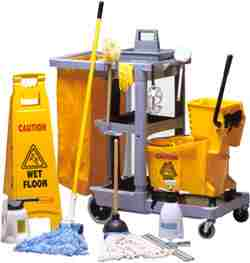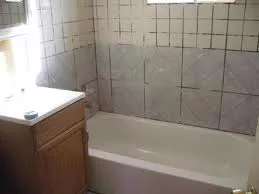Sanitation and Maintenance of Ancient Cities
Good health is directly related to the availability of clean water. A sanitation system is also crucial, as it manages the ever-present issue of collecting and disposing of waste so it does not infiltrate clean water sources. In ancient civilizations, when people began congregating to live near each other in cities, they did not realize the importance of sanitation and clean water. Thus, disease was rampant and lifespans were short.
History of Sanitation in Ancient Cities
Archeological evidence points to the presence of rudimentary sanitation systems and devices in ancient civilizations. The Romans were advanced enough to design and build expansive aqueduct systems to move water throughout their cities. Ancient people in Athens, Egypt, Babylon, and Rome built rudimentary toilets in an effort to manage waste. Even with these attempts at sanitation, it was nearly impossible to manage sewage and keep water clean for use. Diseases were common due to the lack of sanitation.
- The Secret History of Ancient Toilets: Communal toilets were the norm in ancient Rome. These facilities featured stone benches with holes slightly less than two feet apart.
- Roman Sewage: Ancient Romans learned that to avoid deadly diseases, they had to manage their sewage instead of just pouring it into the streets as the Greeks did.
- Sewer History in Ancient Rome and the Roman Empire: Surrounding civilizations learned from the ancient Romans about how to manage sewage with aqueducts, covered drains, and extensive drainage systems.
- Raising a Really Big Stink: The ancient Romans built elaborate sewer systems to bring water to their bath houses and manage the sewage produced by residents.
- A Brief History of Water and Health From Ancient Civilizations to Modern Times: Research has uncovered remnants of wells in ancient Egypt and channels for moving rainwater in Mesopotamia.
- Water and Wastewater Systems in Imperial Rome: After local water sources became polluted in ancient Rome, the Romans were forced to design aqueducts to move water from springs and other water sources that were farther away.
- Ancient Rome Was Infested With Human Parasites, Poop Shows: Roman law stated that human waste had to be transported out of the cities to be disposed of in the country, but this did little to stem the spread of parasites.
- The Road to Civilization Leads Through the Sewer: As far back as 3300 B.C., ancient civilizations understood the importance of managing sewage to keep people healthy.
- In Days of Old, Most Toilet Facilities Weren’t Exactly Commodious: Clay pipes were built and used to transport waste in ancient civilizations via elaborate sewer systems.
- Cesspools and Cholera: The Development of the Modern Sewer: European cities used open cesspools to collect sewage, and these areas were located within close proximity of the marketplace and people’s homes.
- Roman Toilets May Actually Have Been Bad for Public Health: A study of fecal material from ancient Roman archaeological sites showed that despite the civilization’s advances in waste removal, intestinal parasites were still a rampant problem.
- Slums, Sanitation, and Mortality in the Roman World (PDF): The short lifespans of Romans were at least partly due to poor hygiene and sanitation practices.
- The Historical Development of Sewers Worldwide (PDF): Babylonians constructed systems to manage stormwater to direct this surface runoff away from drinking water.
- Urban Water Supply in Roman Cities and its Impact on the West (PDF): Ancient Greece and Rome constructed public fountains to maintain a clean water source for the people.
Sanitation in Major Cities Today
As the Industrial Revolution took hold in both America and Europe, people began living within close proximity of each other in ever-growing cities. Sanitation quickly became a problem in cities such as London, New York City, and Philadelphia. Slowly, governments gained the knowledge and technology to build sanitation and sewer systems to dispose of waste. Cities also built water systems to provide clean water to residents.
Keep Your Office Spotless with Our Free Office Cleaning Checklist!
Want to make sure you’re covering all the essential cleaning tasks? Our comprehensive guide covers all essential cleaning tasks, from daily tidying to deep cleaning tips. Make sure no spot is missed and create a healthier, more organized workspace today!
- A Brief History of Urbanization: New York City, Boston, and Philadelphia were the three biggest cities in colonial America, and in these cities, poor sanitation was responsible for high death rates from disease.
- Rise of Industrial America: As the Industrial Revolution contributed to significant population growth, sanitation problems became worse.
- Apostles of Cleanliness: The lack of clean water and nonexistent sanitation practices were ongoing issues in America until the late 19th century.
- George Waring: George Waring was an engineer who was responsible for designing a more effective sewer drainage system during the late 1800s.
- A Brief History of Sanitation in New York City: New York City was once a place where pigs wandered the streets, people threw their garbage out their windows, and sewage filled the waterways.
- A Rough History of Sanitation in the West: Major cities in North America and Western Europe began to have piped water service in the early 1800s, which helped eliminate the need to haul water.
- Access to Sanitation: Life expectancy and disease rates have a direct correlation with sanitation practices in a community.
- Early Sanitation in Boston and the Evolution of Modern Sewage Systems: Boston’s initial sewage system was designed and implemented during the 1870s, helping to reduce the prevalence of diseases such as cholera.
- PBS Series Explains Why Chicago Needed a Lift: Chicago was the first U.S. city to have a modern sewer system installed, but the city’s topography posed a challenge for those creating it.
- Water Supply, Sanitation, and Hygiene Promotion: Adequate water supply involves providing not only water quality but also convenient access to the water in quantity.
- “Dirty Old London”: A History of the Victorians’ Infamous Filth: London in the 19th century was a congested and disgusting place to be, but advances in sanitation slowly helped to create a cleaner and safer city.
- How Plumbing (Not Vaccines) Eradicated Disease: A lack of sanitation created a situation in which human waste was prevalent nearly everywhere, spreading illnesses such as polio, which reproduces in fecal matter.
Contact Us
Get a quote
Your satisfaction is our priority, and we’re here to assist. Reach out to Busy Bee effortlessly by contacting us. Whether you have questions, need a custom quote, or want to discuss your cleaning requirements, our friendly team is ready to respond promptly. Connecting with us is the first step towards a cleaner and more comfortable environment for your home or business.
Call us for a quote today!
Contact Us
Get a quote
Your satisfaction is our priority, and we’re here to assist. Reach out to Busy Bee effortlessly by contacting us. Whether you have questions, need a custom quote, or want to discuss your cleaning requirements, our friendly team is ready to respond promptly. Connecting with us is the first step towards a cleaner and more comfortable environment for your home or business.
















